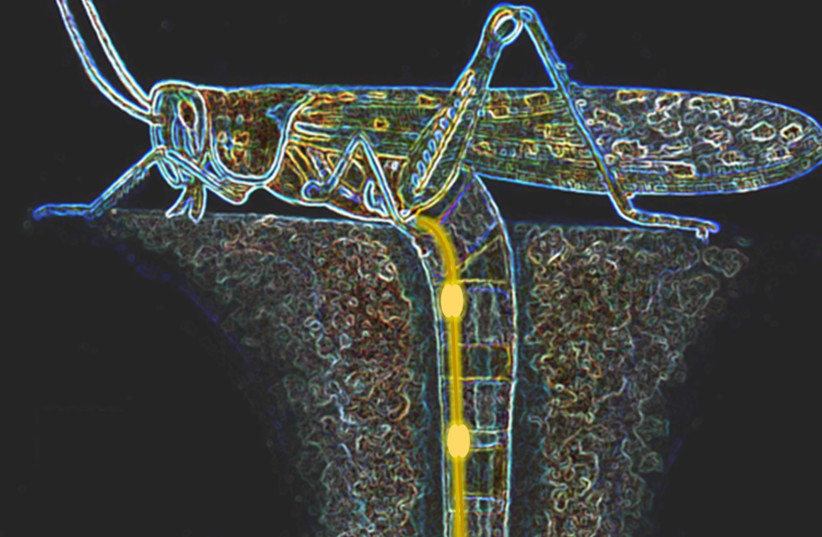Nerves in the human nervous system can stretch only up to 30% without tearing or being permanently damaged. But the female locust, – which digs deep into the ground to lay her eggs in a safe place – is able to extend her abdomen, including the nervous system, to two to three times its size –, just like a movie superhero. It seems that they have superpowers.
Tel Aviv University (TAU) researchers say “this ability is almost inconceivable from a morphological point of view [structures in living things], and as far as we know it has almost no equal in nature.” In the future, they said, these findings could contribute to new developments in the field of regenerative medicine, as a basis for nerve restoration and the development of synthetic tissues.
The study was conducted by Dr. Bat-El Pinchasik of TAU’s School of Mechanical Engineering in the Fleischman Faculty of Engineering and Prof. Amir Ayali of the School of Zoology in the Wise Faculty of Life Sciences. Also participating in the study were Dr. Rakesh Das from the School of Mechanical Engineering, Dr. Moshe Guershon from the School of Zoology and Prof. Eran Perlson and Amjd Ibraheem from the Department of Physiology and Pharmacology in the Sackler Faculty of Medicine. The research was published in the journal iScience under the title “The biomechanics of ultra-stretchable nerves.”
“When the female locust is ready to lay her eggs, she digs a hole in the ground that will offer them protection and optimal conditions for hatching. For this purpose, she is equipped with a unique digging apparatus, consisting of two pairs of digging valves which are located at the tip of the abdomen, on either side of the ovipositor (a tube-like organ used for laying eggs),” said Pinchasik.
“As she digs, the female extends her body until sensors located along its length signal that she has reached a suitable point for depositing her eggs. Thus, to lay her eggs, an adult female, whose body length is about four to five centimeters, may stretch her body to a length of 10 to 15 centimeters and then quickly return to her normal length, and then extend again for the next egg-laying,” she wrote.

“The superpower of the locust is almost something out of science fiction,” added Ayali. “There are only two other known examples in nature of a similar phenomenon – the tongue of the sperm whale and a certain type of sea snail whose nervous systems are able to extend significantly due to an accordion-like mechanism they have. We sought to identify the biomechanical mechanism that gives the female locust its wonderful ability.”
Actions the researchers took
The researchers removed the central nervous systems from female locusts and placed them in a liquid simulating their natural environment under physiological conditions similar to those inside the body. Using highly sensitive measuring instruments, they measured the forces needed to extend the nervous system. “The superpower of the locust is almost something out of science fiction,” added Ayali. “There are only two other known examples in nature of a similar phenomenon – the tongue of the sperm whale and a certain type of sea snail whose nervous systems are able to extend significantly due to an accordion-like mechanism they have. We sought to identify the biomechanical mechanism that gives the female locust its wonderful ability.”
The researchers removed the central nervous systems from female locusts and placed them in a liquid simulating their natural environment under physiological conditions similar to those inside the body. Using highly sensitive measuring instruments, they measured the forces needed to extend the nervous system.
“Contrary to previous hypotheses and examples we are familiar with, we did not find any accordion-like mechanism,” recalled Pinchasik. “We discovered that the nervous system of the female locust has elastic properties that enable it to elongate and then return by itself to its original state, ready for reuse, without any damage caused to the tissue. This finding is almost incomprehensible from a biomechanical and morphological point of view.”
“We will investigate the matter in depth, with the aim of identifying the specific mechanism that enables this unique feature for regenerative medicine therapies,” Ayali said. We hope that in the future, our findings will help to develop synthetic tissues with a high level of flexibility and to restore nerves in regenerative medicine therapies.”
